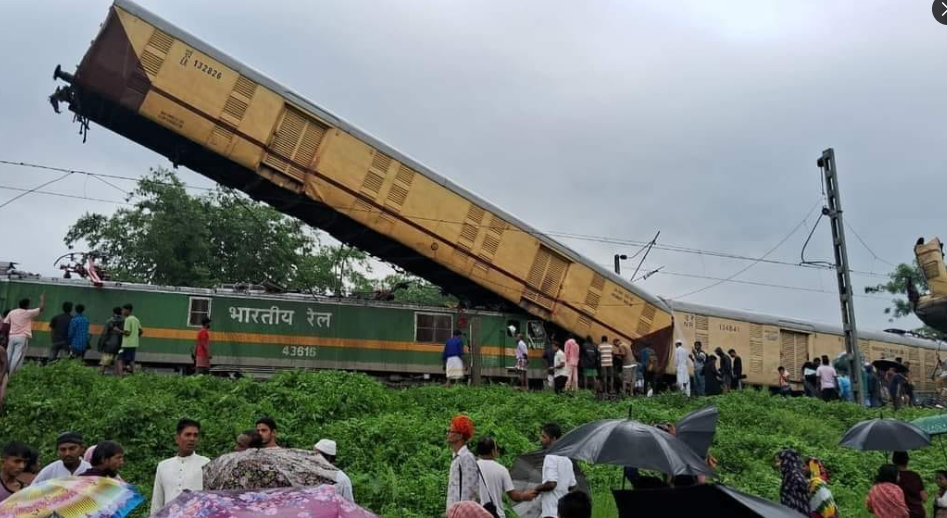According to the Railway Board’s preliminary report, the goods train was operating under a defective automatic signaling system and was traveling above the speed limits when it crashed into the Kanchanjunga Express. The railways have yet to comment on this issue.
Under railway procedures outlined in TA 912, drivers must stop for one minute at each defective signal and proceed at a maximum speed of 10 km/h. Additionally, they must maintain a 150-meter gap from the preceding train to ensure adequate stopping distance if the previous train has not cleared the signal. In this incident, the goods train driver violated these critical conditions.
The Kanchanjunga Express had cleared nine automatic signals with TA 912 and had stopped after crossing the nine signals, awaiting fresh clearance to proceed further.
The Railway Board stated that the goods train driver had been authorized to cross all red signals between Rangapani and Chattarhat railway stations due to the defective automatic signaling system. However, the train’s speed exceeded the permissible limit set for such situations. The station master of Rangapani issued a TA 912, allowing the goods train to pass nine red signals. This authorization was crucial as the automatic signaling system had been malfunctioning since 5:50 am on the day of the accident.
The goods train, GFCJ, departed from Rangapani at 8:42 am and collided with the stationary Kanchanjunga Express at 8:55 am. The impact derailed the guard’s coach, two parcel coaches, and a general seating coach of the passenger train. The driver of the goods train, who was among the deceased, did not follow the mandatory speed restrictions, leading to the crash.
In contrast, the Kanchanjunga Express driver adhered to the safety norms required during a signaling defect, stopping at all red signals for one minute and proceeding at a speed of 10 km/h. The goods train driver, however, exceeded the permissible speed limits and rammed the passenger train.
The TA 912 authority letter indicated that the automatic signaling system had failed and authorized the goods train driver to pass all automatic signals between Rangapani and Chattarhat, regardless of whether they were red or caution signals. Under normal circumstances, a train encountering a red signal should stop for one minute during the day and two minutes at night, proceeding with extreme caution at speeds not exceeding 15 km/h in good visibility and 10 km/h in poor visibility.
Despite these regulations, the goods train exceeded the permissible speed, leading to the catastrophic collision. The Railway Board has not disclosed the exact speed at which the goods train was traveling.
Rescue operations concluded by late afternoon, but efforts to clear the derailed coaches and restore rail services continued. Several injured passengers were treated at the North Bengal Medical College and Hospital, with 41 remaining hospitalized, including nine in critical condition.
The Commissioner of Railway Safety (CRS) initiated a probe into the cause of the accident. Railway Minister Ashwini Vaishnaw visited the site, overseeing relief operations and announcing compensation for the victims’ families: ₹10 lakh for the families of those who died, ₹2.5 lakh for the grievously injured, and ₹50,000 for those with minor injuries.
Prime Minister Narendra Modi offered his condolences to the victims and prayed for the recovery of the injured.
West Bengal Chief Minister Mamata Banerjee criticized the Railway Ministry for neglecting passenger safety and failing to implement the anti-collision system effectively. She alleged that the railways focused more on fare hikes than on improving safety measures.
4o




